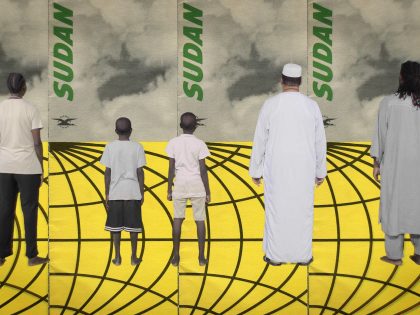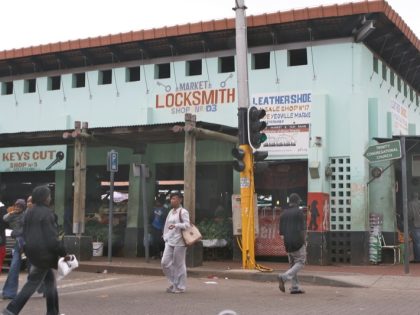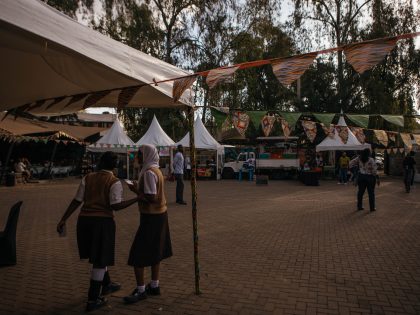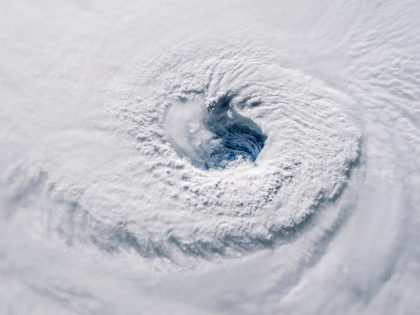The roar of the ocean’s many waters

Image Credit Nicholas Rawhani.
South Africa’s Constitution begins with a bold statement: “We, the people of South Africa, Recognise the injustices of our past …” Like all Constitutions, however, it cannot force itself into South Africa’s daily realities without societal agreement and endorsement. Those first two lines of the Constitution alone are significantly contested. And this is as it should be. If the Constitution is to contribute to transformation it will have to be wrestled with and contested. Not by lawyers or politicians, not by CEOs or intellectuals, but “the people of South Africa” in all their diversity.
This makes freedom of expression – especially through protest action – central to the project of social change which the Constitution envisions, a project which the late Chief Justice Pius Langa described as requiring a “social and an economic revolution.” It is no surprise then that the Constitution, and laws and policies passed by the government in terms of the Constitution, jealously guard the right to protest. For this to happen, this freedom to protest must truly be available to all: rich and poor, black and white.
Furthermore it is not merely the meek, mild-mannered “protests” of the moderate middle class, sitting behind the comfort of our computer screens sipping lattes, which is protected by this right. In a case about student protests the High Court recently reminded us that it is “crowd action albeit loud, noisy and disruptive,” which is often “a direct expression of popular opinion” and that “this is what is protected in section 17 of the Constitution.” Disruptive protest, according the Court, is precisely the form of protest that is constitutionally protected, not an exception to the rule.
This again makes perfect sense. Without causing some disruption to the daily functioning of society, protests – particularly by poor people who do not have the protection that power provides – will struggle to communicate their message forcefully and effectively. As the American writer, former slave and abolitionist Frederick Douglass more than 150 years ago:
If there is no struggle there is no progress. Those who profess to favor freedom and yet depreciate agitation, are men who want crops without plowing up the ground, they want rain without thunder and lightening. They want the ocean without the awful roar of its many waters.
And roar South Africa does. But, as with so much else in South Africa, in the social reaction to protest, double standards along racial and class lines prevail. Protest from white people even when it is disruptive and its content arguably unlawful, receives respect and protection. On the other hand, protesting peacefully while black, especially when it is disruptive to the daily operation of society, elicits violent response and broad public condemnation.
Examples of violent and disproportionate responses to protest action taken by poor black people in South Africa are endless.
Black mineworkers in the North West province are shot dead in broad daylight for doing no more than demanding a living wage. Poor black slum-dwellers in KwaZulu-Natal are assassinated for protesting governmental failures to provide them with housing and basic services. Elderly, black female community health care workers are arrested and prosecuted for holding midnight vigils protesting against unsatisfactory conditions in the Free State healthcare system. Black and coloured farmworkers in the Western Cape are dismissed for exercising their right to strike in attempts to oppose 17 hour working days which involve them working up to 41 hours of overtime in a week.
It is in this context that the new “Double Harm” report by the Socio-Economic Rights Institute of South Africa in Johannesburg should be read. The report brings the violent responses to student protesters calling for “free, decolonised education” into focus. The report is based on witness testimonies, including those of students, from events that were sparked by protests on the Wits University campus in Johannesburg in September and October 2016.
The report describes the police’s unjustified and excessive use of force; indiscriminate shooting including “firing of rubber bullets”; targeting humanitarian workers and individuals seeking safety; and obstruction of attempts by volunteer medics to reach, support and treat wounded students.
Students report that the events left them “scarred physically and “also scarred us emotionally for life.” After the police were controversially invited onto campus by the university, the protests spilled over onto the streets of the neighbouring area of Braamfontein that had according to a witness “now become a war zone.” As professionals working in the area responded to their banal emails and trendy hipsters sipped on cortados and craft beer, students fled from the police who drove around in full riot gear in Nyalas (armored vehicles). Rubber bullets were fired indiscriminately. One student lost hearing in her right ear as a result of a stun grenade. Another was shot “at or around her right eye.” A third student was shot over 10 times while she was trying to negotiate with police.
Students were not the only ones affected as police seemed to assume that all black people were students, all students protestors and all protestors the enemy.
A working-class cleaner in the area lost an eye after he was shot with rubber bullets. He has lost more than an eye. “There are so many things I now can’t do to keep my life,” he says. In a now famous photograph taken by SERI staffer Edward Molopi, a priest is captured attempting to block the way of a Nyala attempting to get to students who sought safety and respite in his church. “Had I not stood there they would have come into the gate and shot at the students,” he says. His version is confirmed by what happened next. After attempting to intimidate the priest by driving the speeding Nyala within centimetres of the priest, police shot him in the face from a point blank range.
***
In late 2017, almost exactly a year after these protests in and around Wits, in what might be another universe but for its geographical location with South Africa’s colonially determined borders, white South Africans took to the streets to protest “farm murders.”
The majority of the protesters appeared to understand these #BlackMonday protests implicitly as the murder of white farmers by black people. The perception among participants often seemed to be that such murders are racially motivated, widespread and mushrooming. Protesters blocked major highways around the country causing major disruptions to traffic. Some flew the old South African flags of the apartheid regime and sang “Die Stem,” the Afrikaans national anthem of the same regime that considered black people as good only to be “hewers of wood and drawers of water.” (Part of that anthem has controversially been retained in the new South African anthem.)
South Africa’s Minister of Defense, Nosiviwe Mapisa-Nqakula, has described some of these actions taken as “incitement.” The South African Constitution prohibits the “advocacy of hatred that is based on race … that constitutes incitement to cause harm”. Understood in the context of the continued reality of racism and subjugation of black people on South African farms, she has a strong case.
Though the number of “farm murders” is “near impossible” to predict, fact-checking media outlet Africa Check reveals that the police records actually illustrate a decrease in the total number of murders from 80 in 2011/12 to 74 in 2016/17. These murders include murders of “persons residing on, working on or visiting farms and smallholdings”. Older statistics indicated that the significant majority of such murders in 2001 (89.3%) were robbery related. A mere 2% were politically or racially motivated. Statistics from the same year also suggest that only 61.6% of attacks on farms were directed at white people.
More importantly the reality on South African farms is that it is black and coloured workers and their families who continue to be oppressed by white farmers. It is these workers that Sobantu Mzwakali argues powerfully must be “centred” in debates on farm murders.
Reports of child labour continue to date, with recent reports from the Free State and North West provinces. Working conditions remain poor. One Western Cape farm worker told a Danish documentary filmmaker “for me personally, it seems as if modern day slavery is practiced on many farms, and the farmworker is almost viewed as “the property” of the employer.” Workers are intimidated and dismissed for joining unions. Despite this the government’s recently agreed upon National Minimum Wage, which entitles the vast majority of workers to 20 rand per hour, will only require farm workers to be paid 18 rand per hour.
The violence against farmworkers occurs in a literal, directly physical sense too.
Two white farmers were recently convicted for assaulting a worker, Victor Mlotshwa, who they suspected of stealing in order to “teach him a lesson”. After assaulting him they place him in a coffin and threatened to douse him in petrol and burn him alive. More recently a Bronkhorstspruit farmer raped his domestic worker and then forced her to perform oral sex on two of his dogs.
Despite this context, in which these racially charged protests must be seen, by and large the police appear to have patiently respected and protect the #BlackMonday protesters right to protest. No rubber bullets. No Nyalas. No tear-gas and stun grenades. White skin, it seems, doesn’t need to be bulletproof: bullets are so allergic to it that they remain in their guns.
***
Afriforum, an organisation purporting to “protect minorities rights” – which usually translates to protect the interests (not rights) of white people – supported the #BlackMonday protests. This is why Afriforum, like other similar groups, are either dishonest or simply “do not care” about the accuracy of farm murder statistics they distribute.
Though Afriforum recoils at the accusation that the protests were “racist” and denounces the flying of the old South African flag, Afriforum itself has been rebuked by the Constitutional Court for referring in court papers to South Africa’s vile racist history as “the so-called injustices of the past”. Two white, Afrikaans-speaking judges of the Constitutional Court responded emphatically in their judgment:
So-called! This embodies the kind of insensitivity that poisons our society. There were historical injustices. Apartheid was all too real. And it was profoundly pernicious. These facts are not “so-called” figments of black people’s imagination.
The lack of empathy of Afriforum and #BlackMonday protesters is palpable.
Unfortunately it is not inconsistent with the attitudes of many white South Africans who continue to refuse to take on board even the very first line of the Constitution – to “recognise the injustices of the past”.
Instead of acknowledging the historical oppression of black people and seeking to challenge it in all of its current forms, white people (like white farmers) prefer to chase ghosts, fighting their our fictitious persecution and burying our heads in the sand. If we cannot recognise the injustices of the past and its present, is it any wonder that student protesters and radical black political movements are beginning to seek decolonisation, questioning whether we are the “people of South Africa” at all?



















